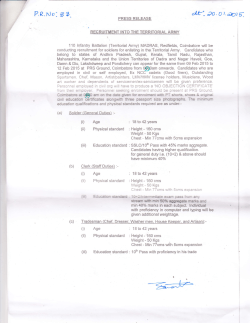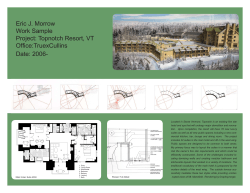
Rose and cylc - NCAS Computational Modelling Services
NCAS Unified Model Introduction Part 5: Finale University of Reading, 3-5 December 2014 Upcoming UM developments Short-term: • Rose and cylc (live at the Met Office now) • Shared respositories (coming online now) Medium term: • N1024 -> N2048 global forecasts • UKESM(-Hi /-Lo) Earth system model – Proposed to include land ice sheets, ocean biogeochemistry, plus carbon and nitrogen cycles Long term: • LFRiC replacement for the UM • GungHo highly scalable dynamical core 2 Rose and cylc • Rose is a replacement for the UMUI from version 9.0 onwards. – “Jobs” will be replaced by “suites” – Suites will be under version control – Tools for viewing, editing and controlling suites • Cylc will control job submission and scheduling. – This will simplify complex workflows and cyclical suites. 3 Rose example 4 Met Office Science Repository Service • From vn10.0 (December 2014) the UM code will be located on the Met Office Science Repository Service • Access must be requested via NCAS-CMS Met Office Shared Repositories (UM, JULES, etc) Updated every 10mins Local Mirror of Shared Repositories Create branches & commit code changes Extract code into Rose suite PUMA 5 UK UM support • Through NCAS-CMS (NERC Centre for Atmospheric Science – Computational Modelling Services): http://cms.ncas.ac.uk • Modelling helpdesk: http://cms.ncas.ac.uk/wiki/CmsHelpdesk • Email contact: ncas-umsupport@lists.reading.ac.uk • UM modelling support team: – Jeff Cole, Rosalyn Hatcher, Grenville Lister, Willie McGinty, Annette Osprey, Simon Wilson (50%) Reading • UKCA modelling support: – Luke Abraham (Cambridge) 6 What NCAS-CMS provides (i) Machines and facilities: • Computing time on Archer. • Support for the UM on national HPC facilities (e.g HECToR, Archer). • A common platform (puma) for the UMUI database, code repositories, and UM submission. • Access to the Met Office/NERC collaboration HPC service (MONSooN) via puma. • Limited support for the UM on local computing facilities (e.g. Polaris, HPC Wales). 7 What NCAS-CMS provides (ii) Core activities: • Training days and user meetings • Documentation and information services • Set of UM “standard jobs” Also: • Development and support for visualisation and analysis tools (xconv, xancil, cf-python, cfplot). • Support for weather, climate and composition with networks of excellence using the UM. • Developments in partnership with UKMO through collaborative projects: – For example: UKHiGEM, CASCADE, CLIMIP, High resolution modelling, UKESM, SWAMMA. 8 Before contacting the helpdesk 1. On ARCHER please make your /home and /work directories readable by the CMS team so that we can help with any queries. chmod -R g+rX /home/n02/n02/<username> chmod -R g+rX /work/n02/n02/<username> 2. Always search the helpdesk before raising a query. You may find that your query has already been answered. 3. When contacting the CMS Helpdesk please make sure you supply the following information to help us answer your query more quickly. – Cut and paste any error messages – The job id of the UM job (e.g. xbcde) – The name of the UM output file ending .comp.leave or .leave 9 Things to do now (i) 1. Register for an Archer account (if you haven’t done so already). 2. Set up ssh-agent to allow connection between your puma and Archer accounts: https://puma.nerc.ac.uk/trac/UM_TUTORIAL/wiki/sshAgent 3. Finish working through the tutorial exercises 4. Make sure to complete the FCM tutorial: https://puma.nerc.ac.uk/trac/UM_TUTORIAL 10 Things to do now (ii) 5. Copy a UM output file to your local system or Jasmin. Produce a plot of your favourite field using an available graphics package. 6. Browse the UMUI database to find a job that is similar to the one you want to run. Look at its options and settings. 7. Read the UM user guide: http://cms.ncas.ac.uk/wiki/Docs/MetOfficeDocs 8. Look at the Fortran code in the UM source code browser: http://cms.ncas.ac.uk/wiki/UM/CodeBrowsers 11
© Copyright 2025
















